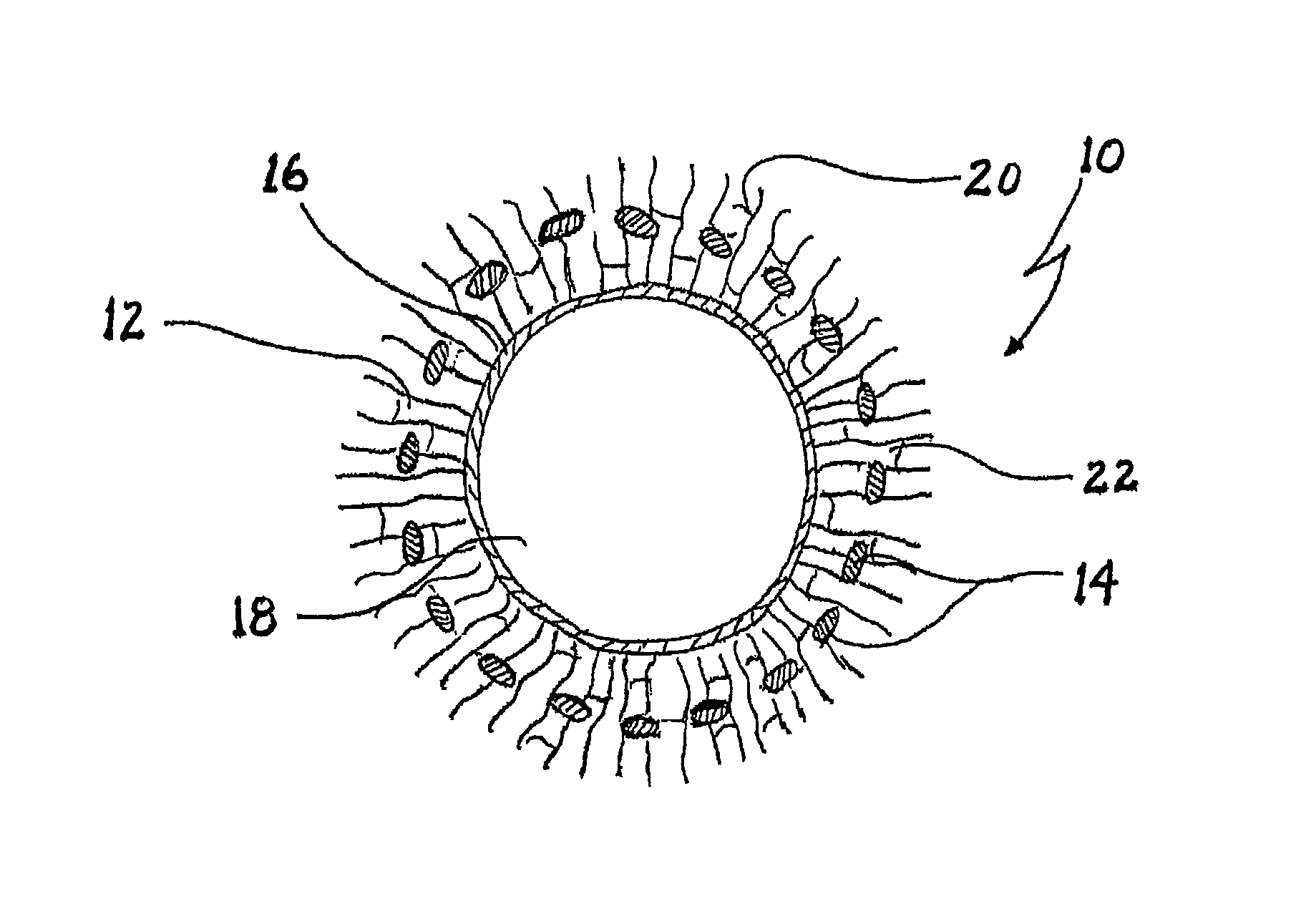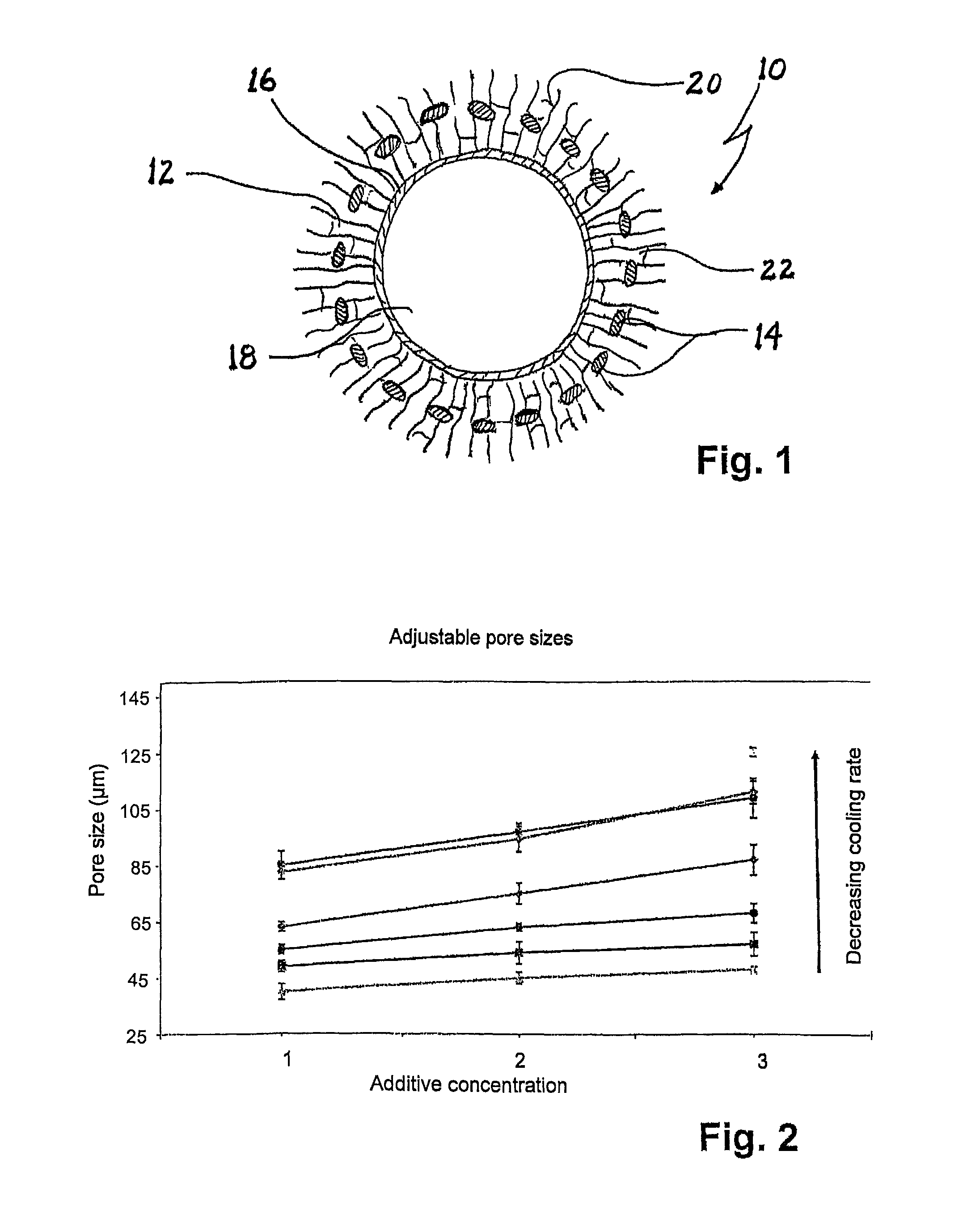Implant and process for its production
a technology of implants and pore structures, applied in the field of implants, can solve the problems that the pore structure of sponge cannot be aligned, and achieve the effect of ensuring the stability of the sponge, simple and efficient adaptation of the implant, and targeted adjustment of the degree of crosslinking
- Summary
- Abstract
- Description
- Claims
- Application Information
AI Technical Summary
Benefits of technology
Problems solved by technology
Method used
Image
Examples
example
Production of a Vascular Implant of the Invention
[0079]A wide-mesh textured polyester net was knitted, cleaned and shrunk by known processes. The polyester net in collagen suspension was completely deaerated in a desiccator.
[0080]A tubular collagen / collagen-elastin membrane with the desired internal diameter of the resulting vascular implant was produced from the collagen suspension or the collagen-elastin suspension by extrusion or by producing a flat collagen membrane and subsequent tube formation with collagen suture. This collagen / collagen-elastin membrane (protein membrane) was placed in the desired length on for example a metal tube; the polyester net (that is to say the structured material component) was pushed over the protein membrane, and a second tubular shape was applied to the structured material component which, depending on design, can serve as cooling plate or for insulation. In a next step, a (collagen / collagen-elastin) suspension was introduced between protein memb...
PUM
| Property | Measurement | Unit |
|---|---|---|
| pore size | aaaaa | aaaaa |
| thickness | aaaaa | aaaaa |
| thickness | aaaaa | aaaaa |
Abstract
Description
Claims
Application Information
 Login to View More
Login to View More - R&D
- Intellectual Property
- Life Sciences
- Materials
- Tech Scout
- Unparalleled Data Quality
- Higher Quality Content
- 60% Fewer Hallucinations
Browse by: Latest US Patents, China's latest patents, Technical Efficacy Thesaurus, Application Domain, Technology Topic, Popular Technical Reports.
© 2025 PatSnap. All rights reserved.Legal|Privacy policy|Modern Slavery Act Transparency Statement|Sitemap|About US| Contact US: help@patsnap.com


